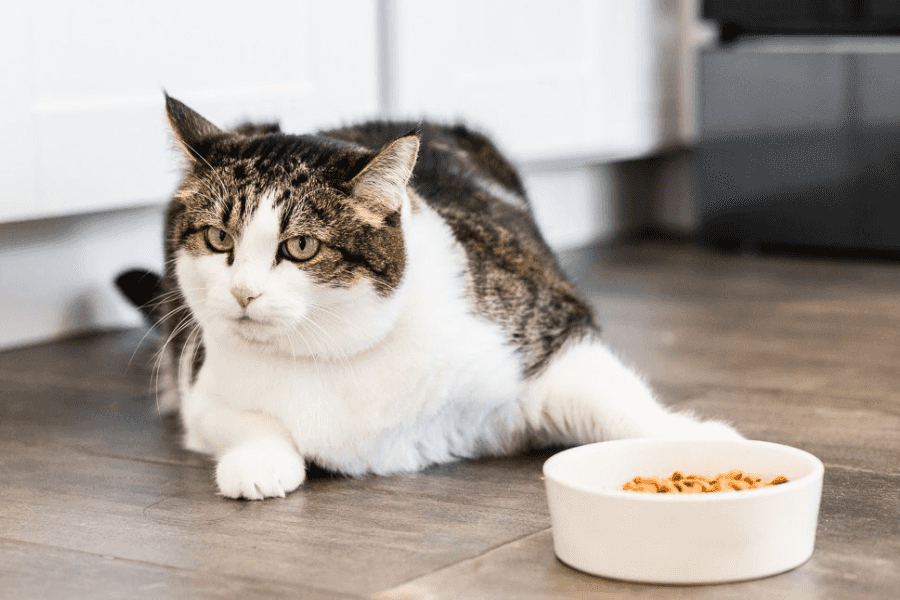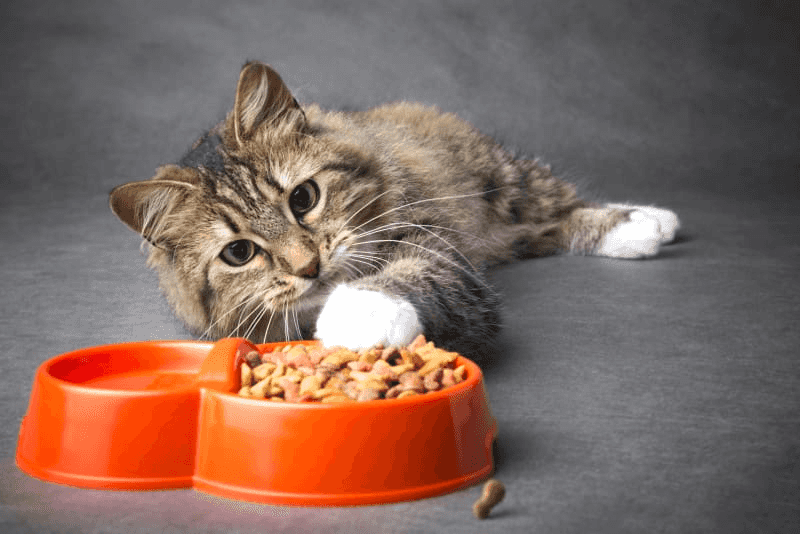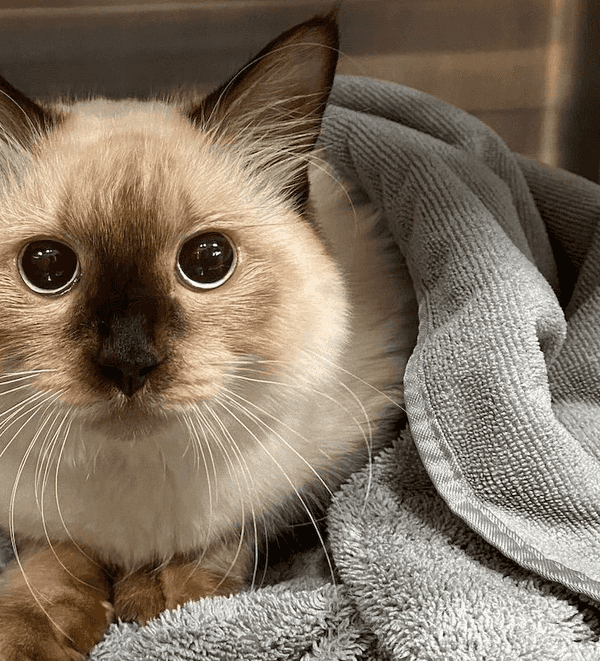Why Your Cat Won't Eat or Drink? Causes and Solutions

If your cat isn’t eating or drinking, it could be a sign of a serious health issue. Cats are known for their finicky eating habits, but a complete refusal to eat or drink for more than 24-36 hours is a red flag that warrants immediate attention. www.junovet.com
There are various potential causes for this behavior, ranging from underlying medical conditions to emotional stress or environmental changes. Common medical issues include infections, kidney disease, and dental problems, all of which can make eating and drinking painful or unappealing for your cat.
Dehydration is a critical concern when a cat stops drinking water. Symptoms of dehydration include loss of skin elasticity, tacky gums, sunken eyes, and general weakness. These signs indicate that your cat’s body is not retaining enough fluids to function properly. www.bostonveterinary.com
Cats can become dehydrated quickly, especially if they are very young, very old, or already suffering from other health issues. Dehydration can lead to severe complications, including organ failure, if not addressed promptly. www.petmd.com
If your cat hasn’t eaten or drunk water for more than 24-36 hours, it’s crucial to consult a veterinarian immediately. Early intervention can prevent more severe health issues and ensure your cat receives the necessary treatment to recover.
To rehydrate a cat that won’t drink, you can try offering electrolyte supplements or meat-flavored water. These can be more enticing than plain water and help restore essential minerals lost due to dehydration. www.webmd.com
Encouraging your cat to eat can be challenging, but there are several strategies you can try. Experiment with different types of food, warm the food slightly to enhance its aroma, or feed your cat in a quiet, stress-free environment to make mealtime more appealing.
Home remedies can also be effective in making meals more appealing. Adding chicken broth or tuna juice to water can entice your cat to drink, and switching from dry to wet food can increase their overall fluid intake.
Monitoring your cat’s eating and drinking habits closely is essential. Keep a log of their intake and any changes in behavior, and follow up with your veterinarian for ongoing issues to ensure your cat’s well-being.
🩺 Possible Causes

Various health issues can cause a cat to stop eating or drinking. One of the most common reasons is an underlying medical condition. Cats are known to hide signs of illness, making it difficult to detect the problem early. Medical issues such as infections, kidney disease, and dental problems are frequent culprits.
Infections, particularly upper respiratory infections, can affect a cat’s sense of smell and taste, leading to a decreased appetite. These infections can cause symptoms like fever, mouth ulcers, and a sore throat, making eating and drinking uncomfortable for your cat. bondvet.com
Kidney disease is another significant health issue that can cause a cat to stop eating or drinking. This condition is especially common in older cats and can lead to extreme nausea, making it difficult for them to maintain their appetite. www.thebeaconvet.com
Dental problems, such as infections, abscesses, broken teeth, or oral tumors, can make eating painful for cats. These issues can cause significant discomfort, leading to a refusal to eat or drink. Regular dental check-ups are essential to prevent and address these problems. www.hillcrestanimals.com
Other medical conditions that can lead to a loss of appetite in cats include gastrointestinal issues, pancreatitis, and ingestion of non-food materials. These conditions can cause symptoms like vomiting, diarrhea, and general discomfort, further discouraging your cat from eating or drinking. www.petmd.com
Behavioral factors, such as stress, anxiety, or changes in the environment, can also cause a cat to stop eating or drinking. Cats are sensitive creatures, and even minor changes in their routine or surroundings can lead to a loss of appetite.
In some cases, a cat may stop eating or drinking due to a change in their diet. Introducing new food too quickly can cause digestive upset or simply be unappealing to a finicky eater. Gradually transitioning to new food can help mitigate this issue.
⚠️ Symptoms of Dehydration

Dehydration in cats can manifest through several noticeable symptoms, one of the most telling being a loss of skin elasticity. You can test this at home by gently pinching the skin at your cat’s shoulder blades and pulling it up. If the skin snaps back into place quickly, your cat is likely well-hydrated. However, if it takes a while to settle back, this indicates poor skin elasticity, a clear sign of dehydration.
Another symptom to watch for is tacky or sticky gums. When you touch your cat’s gums, they should feel wet and slimy. If they are dry or sticky, this is a strong indicator that your cat is dehydrated. Additionally, thick and sticky saliva can also be a related symptom, further confirming dehydration.
Sunken eyes are another significant symptom of dehydration in cats. This condition can be caused by various health issues, but dehydration is one of the most common reasons. If your cat’s eyes appear sunken or abnormal, it is crucial to consider dehydration as a potential cause and take appropriate action.
General weakness and lethargy are also common in dehydrated cats. While these symptoms can be associated with many health problems, when they occur alongside other signs like tacky gums or sunken eyes, dehydration is a likely culprit. Observing your cat’s behavior and energy levels can provide important clues about their hydration status.
In addition to these symptoms, dehydration can also cause a cat’s gums and tongue to appear paler than usual. Although this symptom can be linked to other conditions, it is another piece of the puzzle when diagnosing dehydration. Monitoring the color of your cat’s gums and tongue can help you identify dehydration early.
⏳ When to See a Vet

If your cat hasn’t eaten or drunk water for more than 24-36 hours, it’s crucial to consult a veterinarian immediately. Cats who don’t eat for even a day or two are at risk for fatty liver disease, a serious condition that can affect any feline, but is particularly dangerous for overweight or obese cats.
The decision as to how long to wait before taking your cat to a veterinarian depends on your individual cat. Some cats are notoriously finicky and skipping one or two meals is not unusual. However, if your cat, for no apparent reason, fails to eat for 24-36 hours, even in the face of normal water consumption, an examination by a veterinarian is recommended.
Cats can survive for about two weeks without eating but only three days without drinking. The longer your cat goes without proper nutrition, the weaker they become, so it’s important to contact your vet if you suspect they haven’t eaten in a day or more. They will be able to diagnose the cause and hopefully get your cat back on track to eating regularly.
If your cat stops eating or drinking, don’t wait to see if their appetite improves. Cats who don’t eat for more than a day or two are at risk for a condition called fatty liver. Obese or overweight kitties are at the highest risk, but fatty liver can happen to any cat. Loss of appetite could be related to a serious health problem and prolonged refusal of food can lead to complications, so it’s best to speak with your vet even if your pet is otherwise acting normally.
If your cat is refusing to eat and has any of the following symptoms, immediate vet care is recommended: they’re a young kitten, a senior cat, an underweight cat, or they already have an underlying health problem. Additionally, if they are showing signs of illness such as vomiting, listlessness, or a fever, losing weight, or you suspect they ate something toxic, it is crucial to seek veterinary attention.
💧 How to Rehydrate

If you suspect that your cat is dehydrated, it is crucial to take immediate steps to rehydrate them. One effective method is to offer electrolyte supplements, which can help replenish essential minerals like chloride, sodium, and potassium that are lost during dehydration.
Another way to encourage your cat to drink is by providing meat-flavored water. This can be more appealing to cats than plain water and can be found at trusted pet food stores. The flavor can entice your cat to drink more, helping to maintain their hydration levels.
Wet food is also an excellent option for rehydrating your cat. Wet food contains up to 80% water, which can significantly contribute to your cat’s daily fluid intake. Switching from dry to wet food can make a noticeable difference in your cat’s hydration status.
In addition to these methods, you can try adding a small amount of chicken broth or tuna juice to your cat’s water. This can make the water more palatable and encourage your cat to drink more. Ensure that the broth is unflavored and unseasoned to avoid any additional health issues.
Using a cat water fountain can also be beneficial. Many cats prefer running water, and a fountain can make drinking more enjoyable for them. Fresh, moving water can be more enticing than still water in a bowl, encouraging your cat to drink more frequently.
If your cat is still reluctant to drink, you might consider trying cat ‘soup’ supplements available at most pet food stores. These supplements are designed to be both nutritious and hydrating, providing an additional source of fluids in a form that many cats find appealing.
🍽️ Encouraging Eating
If your cat is refusing to eat, experimenting with different types of food can be a helpful strategy. Cats can be particular about the flavor and texture of their food. For instance, switching from a minced product to a pate, or vice versa, might entice a finicky eater. Additionally, offering canned or wet food, especially those with strong-smelling options like seafood, can stimulate your cat’s appetite.
Warming your cat’s food slightly can also make it more appealing. Cats generally prefer their food at body temperature, which enhances the aroma and can make the food more enticing. You can warm the food in the microwave or with warm water, but be sure to mix it thoroughly to avoid hot spots that could burn your cat’s mouth.
Feeding your cat in a quiet, stress-free environment is crucial, especially if stress or anxiety is a factor in their loss of appetite. Ensure that their food dish is located in a calm area away from loud noises, other pets, or any disturbances. This can help your cat feel more secure and comfortable during mealtime, which may encourage them to eat.
Keeping your cat’s food and water bowls clean is another important step. Cats are sensitive to the smell and taste of their food, and dirty bowls can deter them from eating. Stainless steel bowls are recommended as they are easy to clean and disinfect, ensuring that your cat’s food remains fresh and appealing.
If your cat is still reluctant to eat, you can try drenching their solid food with the juice from a tuna can. The strong smell and taste of tuna can be very enticing to cats and may encourage them to start eating again. However, this should be done in moderation to avoid any nutritional imbalances.
🏠 Home Remedies
If your cat is not eating or drinking, there are several home remedies you can try to make meals more appealing and encourage hydration. One effective method is to add a small amount of chicken broth or tuna juice to their water. This can enhance the flavor and make the water more enticing for your cat.
Switching from dry food to wet food can also help. Wet food has a higher moisture content, which can aid in keeping your cat hydrated. Additionally, the texture and aroma of wet food can be more appealing to cats, especially those who are picky eaters or are experiencing a loss of appetite due to illness. www.webmd.com
Moistening dry food with broth is another strategy. Stick to unflavored, unseasoned broths to avoid any additional health issues. This method not only makes the food more palatable but also increases the moisture content, helping to keep your cat hydrated.
Cat ‘soup’ supplements available at pet food stores can also be a good option. These supplements are designed to be both nutritious and hydrating, making them a suitable choice for cats who are reluctant to drink water.
🔍 Monitoring and Follow-Up
Monitoring your cat’s eating and drinking habits is crucial for their overall health. Regularly check their food and water intake to spot any changes early. Cats are known to hide signs of illness, so even subtle changes can be significant.
If your cat stops eating or drinking, don’t wait to see if their appetite improves. Cats who don’t eat for more than a day or two are at risk for fatty liver disease, which can lead to liver failure. This condition is particularly dangerous for overweight cats.
Dehydration can quickly become a serious issue for cats. Signs of dehydration include loss of skin elasticity, tacky gums, sunken eyes, and general weakness. If you notice any of these symptoms, it’s important to consult your vet immediately.
To prevent dehydration, ensure your cat has access to fresh water at all times. Some cats prefer running water, so consider using a water fountain. If your cat primarily eats dry food, they will need to drink more water compared to cats on a wet food diet.
If your cat’s eating and drinking habits change, it’s essential to follow up with your vet. They can perform diagnostic tests to determine the underlying cause and recommend appropriate treatment. Early intervention can prevent more serious health issues.
Routine vet visits are also important for monitoring your cat’s health. Regular check-ups can help detect potential problems early, ensuring your cat receives timely care. Keep a record of your cat’s eating and drinking habits to share with your vet during these visits.
Tags
Share
Table Of Contents
Related Posts
Quick Links

